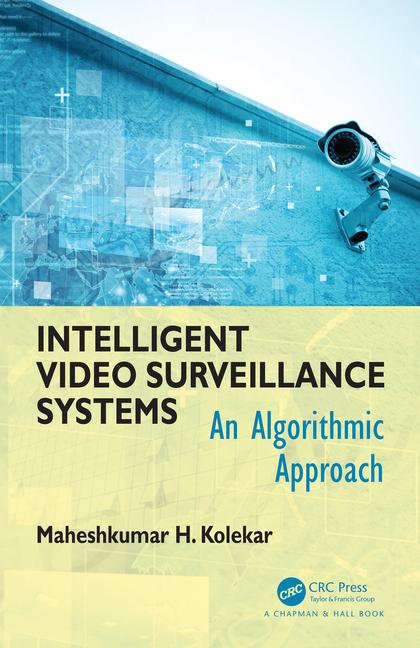Breaking Boundaries: New Directions in Visual Data
Part 3 of 3-Part Series


|
As the digital transformation of video has progressed, we’ve seen the same sorts of innovations in video that we’ve seen over the years in other realms of information technology. First came video analytics – a market segment that’s still seeing new and smarter software packages emerge every quarter. Then came innovations in storage, with virtualized servers and cloud storage, which have opened up new ways to reduce storage needs and optimize capacity. And most recently, we’ve seen the rise of cloud-based software services, which take analytics off of local processors and make video accessible remotely. While all of these segments are still maturing in their own right, they’ve laid the foundation for the next batch of innovations, which go beyond simple storage and bandwidth concerns to deliver entirely new uses for visual data.
There are two forces driving innovation in visual data at the moment: the natural progression of technology that I described here, and the cross-pollination occurring between B2B video solutions providers (primarily in the surveillance industry) and vendors with consumer-facing products. Increasingly, these two previously separate businesses are merging in new and interesting ways. The result? A host of emergent applications and tools that takes visual data to a whole new level, creating new opportunities, ranging from image-sharing services to highly complex augmented-reality applications and more.
Some of these uses are trivial and fun, while others could be hugely important to both business and national security. In either case, this is an exciting time to be living in the world of visual data.
You Can Take It With You
One of the best things to come out of the mixing up of consumer and B2B video technologies is the huge improvement in the mobile video experience. Ooyala, a provider of online video technology and services, recently surveyed its 100 million global monthly users and found that consumers are watching more video, and for longer, on their portable tablets than on their desktop computers. This is largely attributed to the fact that streaming video has improved dramatically over the past few years, enabling users to view high-quality video seamlessly.
Remember when videos used to “buffer” every 30 seconds or so? That’s not really happening anymore, and that simple improvement alone is a major revolution in video.
Of course, I’m not just talking about the ability to watch a TV show or movie on your iPad without interruption. The same technological advancements that have made that possible have made remote monitoring of surveillance footage more of a reality, too. For years, video surveillance providers have been promising remote monitoring and access to surveillance systems via smartphones and iPads, but we all know the actual experience of those services has been suboptimal. Now, thanks to advances in video technology, storage and bandwidth, the dream of truly remote monitoring is becoming a reality. iZON, a new consumer video surveillance product, enables homeowners to see what’s happening in their living room from a smartphone or tablet anywhere in the world, ruining teenage parties everywhere. And in pilot tests, Prism Skylabs’ remote functionality has enabled business owners to check in on their storefronts from thousands of miles away, sitting in an airport with an iPad.
A Picture Is Worth A Thousand Dollars
It’s not just video that’s easier to access and share these days, but images as well. Image-sharing sites like Instagram have tapped into consumers’ desire to express themselves creatively and to share information visually. In just one year, Instagram racked up 5 million users and 150 million photos. Now in its second year, the site is up to 12 million users. Tellingly, more than 80 percent of those users include filters when sharing their images, hinting at the fact that consumers don’t just want to share pictures, they want to share feelings and experiences.
That, in turn, has led to a burgeoning business interest in image-sharing services. Starbucks joined Instagram early on, creating online slideshows of Instagram images taken from inside of various café locations. The San Diego Chargers recently started using PicPlz, another image-sharing service, to share photos with fans both during the regular season and throughout the off-season – and has seen positive results. The team has been inundated with comments from fans that appreciate the opportunity to connect with their team in the off-season, too. While image-sharing services themselves have not yet figured out how to monetize the trend, brands from various industries are finding the services to be an increasingly valuable marketing tool, enabling instant, free branding – and a direct connection to consumers.
Once again, the surveillance industry can benefit from what, on the surface, seems like a superficial consumer trend. Just think about how useful it might be to pull a few representative photos out from an hour’s worth of surveillance video, and how much faster a security professional might understand what happened in that hour from those few shots than from sitting through an hour of footage. Now imagine that professional being able to easily e-mail, IM or text those images to his boss or to the police. Suddenly image-sharing is like a really useful tool.
Your World, Only Better
Arguably the most exciting, recent innovation in visual data is the advent of what some call “augmented reality” and others “online-to-offline convergence.” Both terms refer to bringing virtual tools and information to bear in the physical world. Yelp’s Monocle application is an early example – it enables smartphone users to view a 3D map of their surroundings, overlaid with reviews from the company’s site of nearby venues. The information displayed can be filtered so that users can, for example, find a nearby pizza joint or check to see if there’s a decent grocery store within walking distance.
Amazon’s new Flow app is another early entrant in the augmented reality space. Using Flow, consumers can scan the bar code of any product and pull up Amazon’s price for the product, along with customer reviews and any other relevant information that’s available (the trailer for a newly-released DVD movie, for example). The app enables instant price comparisons, helps users understand more about a product in real-time and even enables consumers to buy products online while they’re shopping in the “real” world.
It’s this last bit of functionality that has financial analysts calling this space a trillion-dollar opportunity and businesses from various industries trying to get a piece of it. It’s also yet another example of how customer demand is driving advancements in technology.
“It used to be that business and government created the technologies that eventually made it to the masses. Email, the Internet and personal computers are three examples of how technology used to evolve,” said Shadman Zafar, senior vice president for product development at Verizon, recently while talking about Verizon’s predictions for the top technology trends in 2012. “Today, technological advancement is no longer driven from a ‘push-through’ model where consumers are simply on the receiving end. End users – consumers – are driving technological change and creating a world where what they want is always accessible to them.”
These new consumer-driven advancements are also changing the way businesses view surveillance video. Just think of the volume of video produced every day by nearly every business in the developed world. Now imagine if, instead of being a burden – something business owners need to worry about storing, processing and transmitting – that footage became a business opportunity, not just in the form of protecting a business against security breaches and financial losses, but in terms of its potential marketing value. Place a privacy filter on that footage and use some of the latest tools out there to pretty it up, and suddenly that footage that was creating storage and bandwidth nightmares is a highly effective visual branding asset.
Transparency – But at What Cost?
It’s this sort of subtle shift in perspective that augmented reality is all about – and one represents a fundamental shift in how data is being structured.
“Most of the IT industry has been built on information that machines like: structural information,” says Mike Lynch, founder of Autonomy, a UK-based company at the forefront of augmented reality that was recently purchased by Hewlett Packard for a cool $11 billion. “Nearly all of the systems you see run on structured information so we spend a lot of time trying to fit information into the forms computers like. What’s happening now is there’s an explosion in consumer-friendly information like social media, video, audio, text, e-mail. So what we are seeing is the industry is about to undergo one of its major changes and move over to everything happening around human information rather than computer information. So, if you like, we are no longer going to be slaves to what the computer wants.”
As with most advancements in visual data, however, augmented reality comes with a number of privacy concerns, not only for those in the surveillance business, but also for all businesses. Imagine walking down the street, for example, and seeing a celebrity out with a mystery woman. A quick snap with your smartphone and you can determine who the woman is; a great feature for paparazzi, to be sure, but also something of great concern for the general public.
“Augmented reality provides a new level of transparency in our world, but that transparency comes with a price,” Lynch says. “Once computers can take pictures or videos of the world and interpret them, ordinary people with ordinary resources will be able to do very powerful things.”
At the recent Techonomy conference, Lynch gave the hypothetical example of a small group of people dedicated to tracking someone through a city. All they would need to do would be to post pictures of license plates on Facebook, and their smartphones or tablet computers would sift through all that collective data and turn it into a tracking map.
Lynch says he has resigned himself to accepting that the death of privacy is coming, whether we like it or not. Perhaps the better way to contemplate the loss of privacy, he suggests, is to think about how we will need to change our preconceptions about what exactly privacy is.
It’s an interesting question, particularly for those of us who consider privacy on a daily basis as part of our business: What does it mean to live in a world in which everyone, citizens and governments alike, has to show all the cards in his or her hand? And as new applications continue to emerge in the world of visual data, we’ll undoubtedly move closer to an answer.
Looking for a reprint of this article?
From high-res PDFs to custom plaques, order your copy today!







